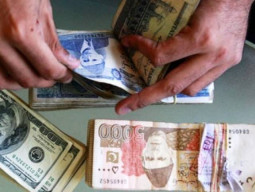
Pakistan landed at the UN Climate Change Conference (COP21) in Paris with intentionally weakened INDCs — a meaningless one-pager, which was the shortest plan on climate change presented by any country. It was more significant for what it did not say rather than for what it did. Within the ongoing climate negotiations process, the INDC is the defining country statement and, in all probability, will be the document around which the future regime is going to be constructed. The abbreviation stands for Intended Nationally Determined Contributions and it is worthwhile to carefully walk through these words that seem to have bewildered policymakers in Pakistan.
The first word, ‘intended’, portrays the completely voluntary nature of this document and captures the state of the gridlocked climate negotiations — it encompasses the developing countries’ principled stand that they are not historically responsible for climate emissions and need space for growth without any restrictions imposed on their future development. Simultaneously, it also portrays the apathetic inaction from developed countries, the so-called climate dirty dozen, which continue to procrastinate over the reduction of climate emissions in their own countries while also failing to deliver the promised $100 billion per year of climate finance that can assist developing countries in both adapting to climate effects, as well as pushing their growth on to cleaner pathways. The words that follow are ‘nationally determined’, which reinforce the homegrown nature of this document as it is not some top-down or donor-driven prescription, but an enlistment of national priority actions that the country defines for itself to counter the climate challenge. It extends complete independence of action, or conversely inaction, to the party, while instilling in it a sense of responsibility of making these planned actions transparently known to the world. The final word is where most of the confusion lies and which our governing gurus apparently failed to comprehend. The word ‘contribution’ — or the ‘C’ in INDC — has multiple dimensions spread over time, as well as the type and nature of contribution that a country can make. It is supposed to showcase to the world what, as a globally responsible stakeholder, the respective country’s willing contribution is towards facing up to and addressing this collective global challenge. The time dimensions mean that it is not just about what the country is intending to do in the future, but probably more importantly, what it is already doing to both adapt to the effects of climate change as well as mitigate any future contribution to climate change.
This is where Pakistan missed the opportunity to put forward its very strong climate case to the world. Pakistan is an extremely low contributor to the climate change issue, emitting even less than one per cent of global greenhouse emissions, but remains one of the worst victims of climate impacts. It is certainly a country on the wrong end of climate injustice and the latest climate vulnerability index, brought out by German Watch during COP21, categorises it amongst the top-10 most climate-vulnerable countries of the world. It has continuously remained so for the previous five years. This is no surprise for a country facing up to mega floods, glacial outbursts, erratic monsoonal shifts, urban heatwaves and freak climate-triggered disasters, such as cyclones and tornadoes — all racking up forced economic losses to the tune of billions of dollars every year. The luxury of time is no longer available to Pakistan as it is compelled to relentlessly endure the uninvited consequences of global climate impacts every year. However, per force of circumstance, it is already bracing up to face this global issue with plans for climate-compatible infrastructure development, adapting its agriculture to shifting rainfall patterns and dealing with millions of climate refugees every year.
All of this, and much more, is already happening in Pakistan and is the forced ‘contribution’ to climate change that we failed to register, with a captive world audience attentively listening to hear from us through our INDC. Although beset by climate impacts, Pakistan has been responsibly endeavouring to shift its economic growth onto cleaner and climate-friendly pathways. While the country’s future emissions are poised to significantly rise as it develops and utilises its indigenous coal resources to fuel its growth, it has the opportunity and the ‘intended’ plans in place already to decouple its future economic growth from an equivalent growth of its emissions. Deploying the latest and most efficient clean coal technologies, focusing simultaneously on renewables, hydro, nuclear and gas-fuelled energy options and sequestering carbon emissions through the forestry sector — these are all policy initiatives that are already underway in Pakistan and should have been the ‘C’ of the INDC, which Pakistan failed to produce.
Pakistan is a climate victim and definitely not a part of the problem, but it has the will, the plans and the policies in place to be a responsible part of the climate solution. This is the very strong message, which the INDC missed out on portraying. Within this larger missed context, there are two flagship initiatives that needed to be part of the national discourse at COP21 and were, in fact, part of the well-researched original INDC that got scrapped at the last minute and fell through the cracks of an inter-ministerial confusion on the document. These are the Quaid-i-Azam Solar Park and Khyber-Pakhtunkhwa’s Billion Tree Tsunami projects — both of which are assisting Pakistan in fighting climate change by avoiding and reducing carbon emissions and are the responsible ‘contributions’ to the global effort that the world wanted to hear from Pakistan. The Quaid-i-Azam solar project, even though delivering at a high capital cost, will undoubtedly shrink Pakistan’s present and future carbon footprint through utilisation of an indigenous renewable source of energy. Once completed, it aims to be the largest solar park in the world and a part of Pakistan’s policy commitment of producing, at least, 10 per cent of its energy mix through renewables. Similarly, K-P’s flagship Billion Tree Tsunami is an ongoing project, which is preserving and enhancing the forest resource in the province, and is also sequestering carbon and building local resilience to the impacts of climate change. In doing so, the initiative is extending a win-win opportunity for K-P, Pakistan and the world. For K-P, it is increasing forest cover while generating green jobs for the youth. For Pakistan, this project is enhancing water availability, reducing soil erosion and increasing resilience against climate-induced floods. For the world, it is sequestering carbon and contributing towards global climate mitigation. The project managed to capture global attention and was recognised as part of the voluntary Bonn Challenge. It was showcased at COP21 as a unique initiative — the first of it kind from a sub-national entity. Pakistan’s INDC, however, willfully failed to highlight both these initiatives.
Our government apparently cowered away from presenting an effective INDC for fear of committing to future emission targets or risking a mortgaging away of its future development space. This ill-informed position defies the very concept of the INDC and fails to comprehend the voluntary and intended nature of this submission. Also, while avoiding stating any future contributions, Pakistan, as described earlier, also failed to portray its very strong and real existing contributions to the global efforts against climate change. In doing so, it chose to throw out the baby with the bath water. As the climate negotiations stand to date, the INDCs will be used effectively as a reflection of a country’s existing and future development and economic growth plans, and will form the pathway for directing future climate and development finance flows. Pakistan has missed the opportunity to use the COP21 forum to put its case forward, but it still has a chance to internally comprehend the INDC’s utility and revisit and revise its submission. This will be in our national interest, as well as in the interest of a world wanting to hear from us.
Published in The Express Tribune, December 8th, 2015.
Like Opinion & Editorial on Facebook, follow @ETOpEd on Twitter to receive all updates on all our daily pieces.















































COMMENTS (8)
Comments are moderated and generally will be posted if they are on-topic and not abusive.
For more information, please see our Comments FAQ